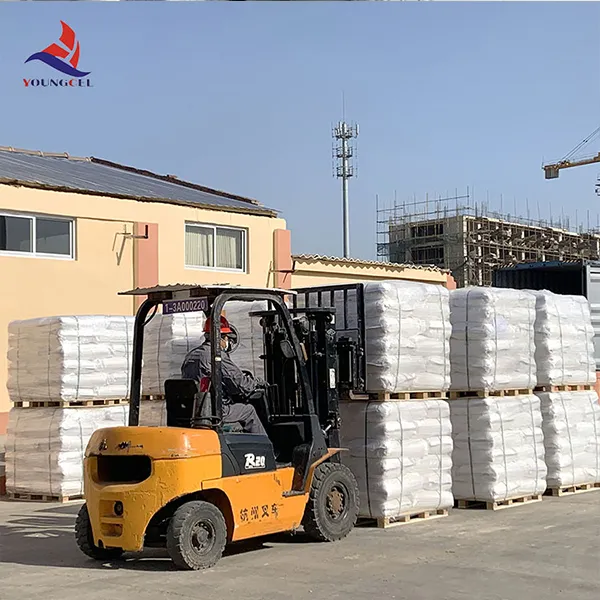The Importance of Choosing the Right Adhesive for Tile Installation
When it comes to tile installation, one of the most crucial factors that can determine the success and longevity of your project is the adhesive used. Tile adhesive plays a significant role in the overall performance of tiled surfaces, whether in a residential bathroom, kitchen, or commercial spaces. Choosing the right adhesive for tile is essential to ensure aesthetics, durability, and resistance to moisture, temperature changes, and other environmental factors.
Types of Tile Adhesives
Tile adhesives come in various forms, each designed for specific applications and types of tile. The most common types include thin-set mortar, mastic, and epoxy adhesives.
1. Thin-set Mortar This is a cement-based adhesive that is ideal for most ceramic and porcelain tiles. Thin-set mortar is versatile and can be modified with additives to enhance its strength and water resistance. It's recommended for indoor and outdoor applications, particularly where moisture exposure is a concern.
2. Mastic This adhesive is a premixed, organic adhesive that is easy to use and suitable for wall tiles. However, it's best avoided in moisture-prone areas like showers or outdoors, as it may not provide the same level of adhesion and water resistance as thin-set mortar.
3. Epoxy Adhesives Known for their strong bonding characteristics, epoxy adhesives are ideal for heavy-duty applications. They are particularly useful for glass tiles or in environments subject to harsh chemicals. However, their application can be more complex and often requires skilled labor.
Factors to Consider When Choosing Tile Adhesive
When selecting an adhesive for your tiling project, several factors need to be taken into account
- Type of Tile The material and size of the tile play a pivotal role in determining the type of adhesive required. Larger and heavier tiles may need a more robust adhesive, such as modified thin-set mortar. Additionally, some decorative tiles, like glass or marble, may need specially formulated adhesives.
adhesive for tile

- Location Consider whether the installation is indoors or outdoors and the specific environment (wet, dry, heated). For wet areas like bathrooms and kitchens, moisture-resistant adhesives should be prioritized to prevent mold growth and tile dislodgement.
- Substrate Compatibility The surface onto which the tile is being adhered is also crucial. Different substrates (like cement boards, drywall, or concrete) may require specific types of adhesives to ensure effective bonding.
- Installation Conditions Ensure the temperature and humidity conditions are suitable for the adhesive you plan to use. Some adhesives may not cure properly in extreme temperatures or high humidity, reducing their effectiveness.
Application Tips
Once you have chosen the right adhesive, application is key to achieving a successful tile installation. Here are some tips
- Surface Preparation Always clean and prepare the surface before applying adhesive. This includes removing dust, debris, and any previous adhesives that could interfere with bonding.
- Correct Mixing If using dry thin-set mortar, follow the manufacturer’s instructions for mixing. Achieving the right consistency is essential for optimal adhesion.
- Spread Evenly Use a notched trowel to spread the adhesive evenly, allowing for appropriate coverage and ensuring the tile has full contact with the adhesive.
Conclusion
In conclusion, selecting the appropriate adhesive for tile installation is fundamental to achieving a long-lasting, visually-appealing finish. By understanding the various types of adhesives available, considering the specific requirements of your project, and applying correctly, you can ensure that your tile installation withstands the test of time. Investing time in this important step will pay off in enhanced durability and performance of your tiled surfaces.
-
Rdp Powder: Key Considerations for Wholesalers in the Building Materials IndustryNewsJul.08,2025
-
Key Considerations for Wholesalers: Navigating the World of Hpmc - Based ProductsNewsJul.08,2025
-
Hpmc Detergent: Key Considerations for WholesalersNewsJul.08,2025
-
Key Considerations for Wholesalers: China Hpmc For Tile Adhesive, Coating Additives, Concrete Additives, and MoreNewsJul.08,2025
-
Crucial Considerations for Wholesalers: Navigating the World of Construction MaterialsNewsJul.08,2025
-
Key Considerations for Wholesalers Sourcing Additive For Cement, Additive For Concrete, Additive For Putty from Additive Manufacturer Shijiazhuang Gaocheng District Yongfeng Cellulose Co., Ltd.NewsJul.08,2025




